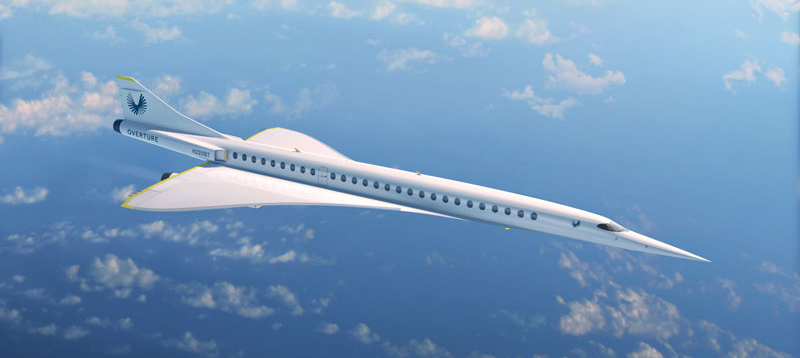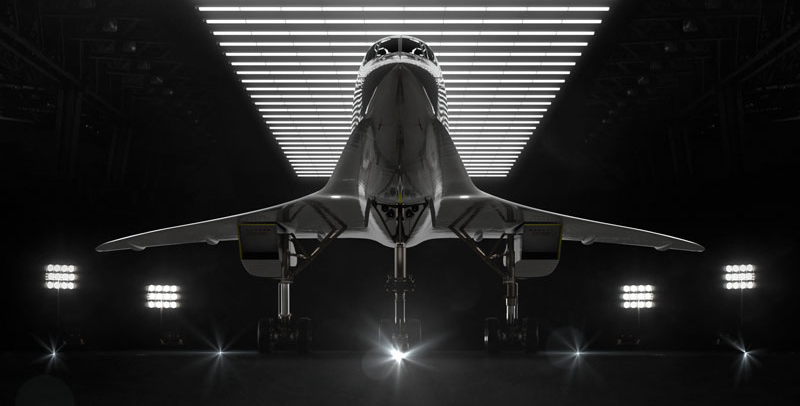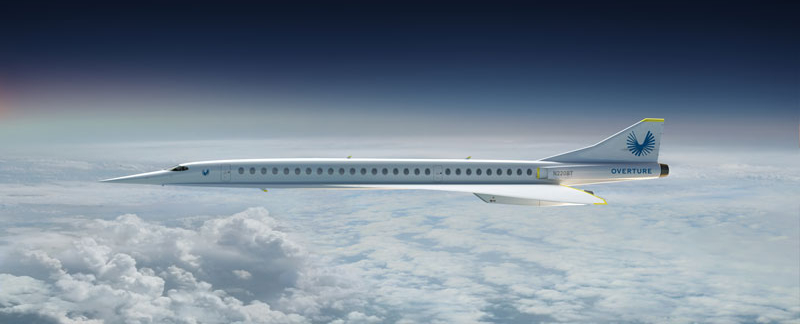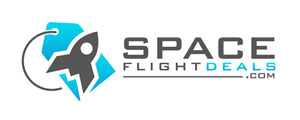Boom Overture – Supersonic Air Travel
In just about every sphere of human existence, recent technological improvements have led to amazing progress. Computers for example, have improved almost immeasurably over the last fifty years. It has been estimated that there is over 100 million times more processing power in a typical modern day smartphone than there was on the Apollo missions to the moon. Medical advances over the same period mean that new treatments like organ transplants are everyday events and powerful drugs to combat cancer are taken for granted.
And yet there is one area of human technological activity which has seen no improvements whatsoever. In fact, things have gone backwards. That area is the speed of air travel. The speed of commercial aircraft flights has changed little since the very first commercial passenger jet, the de Havilland Comet, which was developed in the 1950s. Boeing 747 Jumbo Jets (developed in the 1960s) still fly today and indeed are still being made, with production finally due to end in 2022.
Worse still, the option of supersonic airline travel, which existed for around thirty years, came to an end in 2003 with the final retirement of the Anglo-French Concorde aircraft. It is coming up to two decades since that day, and yet there has been no sign of any replacement. Until now.
Today, there are in fact several different companies looking to develop and introduce new supersonic commercial aircraft services. Major manufacturers like Boeing, and Lockheed Martin, plus smaller outfits such as Aerion Supersonic, Spike Aerospace and Richard Branson’s Virgin Galactic are developing futuristic looking candidates. Many of these will be aimed at the business user / private jet sector, rather than anything like an equivalent to current mass market jets.
Yet there is now at least one company, which is well on the way to fulfilling this need. Indeed, its new supersonic jet is already in the early stages of production. That company is a little known but aptly named American start up called Boom Technology Inc.
Let’s take a closer look at the company and its proposed supersonic service…

Boom – The Company & Brief History
Boom Technology operates from its base at Centennial Airport near Denver, Colorado. It has its own custom made hangar, within which it is designing and constructing its prototype aircraft. At the time of writing, the company already has a total workforce of around 150 people. It also is preparing for a recruitment drive as development work continues toward full scale manufacture.
Founded in 2014, Boom Technology is one of the smallest of the many companies involved in the race to develop a supersonic passenger jet. You may think that the sheer volume of investment capital necessary to design and build a new jet would favour the behemoths of the aviation industry, such as Boeing or Airbus. Yet, as Boom Technology can clearly demonstrate, size isn’t everything…
Smaller, newer companies can be more fleet-footed and innovative than a major conglomerate. They are less encumbered by internal bureaucracy and also less prone to the ‘that’s the way we’ve always done things around here’ type of inertia found in older organisations. Also, venture capital can now be found more easily, independent of old school finance via big banks and state subsidy.
There is no shortage of industry experience at Boom Technologies either. Company CEO Blake Scholl is a fully qualified aerospace engineer who has worked for the likes of NASA, SpaceX and Boeing. He directed engineering on the second stage of SpaceX’s Falcon 9 rocket for example. He has also played a major role in the design of a hypersonic military plane and founded an executive jet division at a major airliner. He is also a qualified pilot, although it seems unlikely he will be taking the controls of any of his proposed Overture aircraft.
Other board and staff members have experience working for the likes of Gulfstream, Lockheed Martin and the US military. Chief Engineer Greg Krauland was even part of the design team working on Virgin Galactic’s WhiteKnightTwo spaceplane.
Boom’s Supersonic Plane – Overture
The company is designing its new Boom Overture aircraft, which will be capable of a cruising speed of Mach 2.2, with a range of around 8,000km (about 4,500 nautical miles). This capability would enable up to 55 passengers to travel from London to New York in around three and a half hours, cutting the time currently taken for this journey almost by half.
The plane will have a delta winged shape and will be constructed from carbon fibre and bonded composite materials. Although expensive, it is a far more practical material for construction than traditional aluminium. This is because of its light weight and its resistance to the expansion effects of extreme heat caused by air friction at supersonic speeds. It will be powered by three turbofan engines. The design of these is being finalised in conjunction with the renowned development team at Rolls Royce.
The proposed plane has been estimated to have a total of around five hundred potential viable routes. Like all supersonic planes including Concorde, it is hampered by the problem of the loud and potentially destructive ‘boom’ caused by breaking the sound barrier. Current regulations mean that it will only be permitted to fly supersonically over the ocean. It is therefore ideal for trans-Atlantic routes. Its maximum range limit means that for trans-Pacific journeys, it will need a short re-fuelling stop. Work is continuing to limit the supersonic boom sufficiently to allow it to be used on overland routes too.
Orders have already been placed for the plane. Virgin Group have already tabled a request for ten aircraft, and indeed Virgin Galactic are assisting in both the manufacture and the testing of the jet. Japan Airlines are also very keen, and have placed an order for up to twenty planes. Overall, there are already confirmed requests for close to one hundred Overture aircraft in total. It has even been contracted by the US Air Force with a view to its possible future use as Air Force One – the plane used to ferry the President around the world.
The current focus of the company is on the manufacture and testing of its XB-1 prototype. This is a one third scale model of the full sized Overture aircraft. It has already received a ‘launch’, although only of the PR kind. This came in October 2020, when it was unveiled to the waiting media for the first time. It is expected to receive its first actual flight test early in 2021.
The XB-1 ‘Baby Boom’ is 68 feet (21 metres) long with a 17 foot (5.2 metres) wingspan. It will weigh around 13,500 pounds (just over 6,000 kg) at take-off. The prototype will be powered by three General Electric J85-15 engines, which are also used by the US military to power its fighter jets.

Current Progress and the Future
The race to get a commercial passenger carrying jet off the ground and into scheduled service is an ultra-competitive one. Nevertheless, with the company’s prototype supersonic jet the XB-1 on the cusp of its inaugural flight, there is no doubt that Boom Technology are the closest of the main players to achieving their goal. Boom Technology may well be the smallest, but they may also be the swiftest in this supersonic sprint.
In truth of course, they are still some way off. Whilst progress on the XB-1 prototype seems to be smooth, everything then needs to be scaled up to the full size Overture aircraft. The first paying passengers are not expected to take to the air until 2029.
Boom – A Supersonic Summary and The Future
The success of Boom Technology’s design team in getting their prototype supersonic airliner off the drawing board and onto the runway cannot be underestimated. It represents the first time an independent company has built a functioning supersonic jet. Furthermore, it has plotted a realistic path toward a foreseeable future where the world once again has access to regular supersonic aircraft travel. Within a decade, most of the world’s major overseas intercontinental routes should be covered by a supersonic airline service. The planet will surely seem a smaller place.
There is every chance that the company will be able to meet its planned schedule. The necessary funding is in place and they already have the necessary expertise on board. Confidence in Boom is boosted by the fact that big commercial carriers like Japan Airlines and manufacturers with the calibre of Rolls Royce and the expertise of Virgin Galactic are also on board. The future surely looks bright.
How much will the service cost? Well, ticket prices are set by the individual airlines flying each route. In any case, 2029 is a long way ahead to be finalising such details. Nevertheless, Boom are designing their Overture aircraft with the intention that its operating airlines will be able to offer fares similar to a long-haul, business-class trip.
Admittedly, at those kinds of prices, supersonic jet travel cannot really be considered to be an everyday possibility for most people. But then again neither was intercontinental travel in the early days of the passenger jet. Then Freddie Laker came along in the 1970s to provide the prospect of long haul flights which were affordable to all. Maybe it is only a matter of time before increased competition causes prices to drop. This is certainly the long term vision which the board of Boom Technology have in mind.
The engineers and boffins at Boom have already outpaced their larger rivals and competitors by getting their XB-1 prototype off the drawing board and onto the runway first. If progress continues at the current rate, maybe we will soon see aircraft technology finally catch up with progress in other areas. By the end of the decade, Boom Technology will make the sight of sleek, super-swift supersonic passenger jets taking to the sky an everyday reality.

